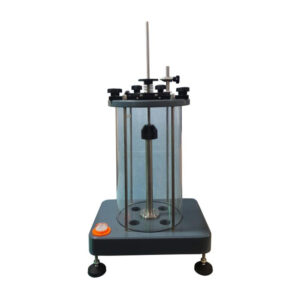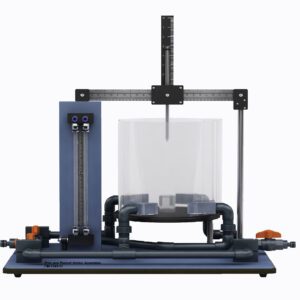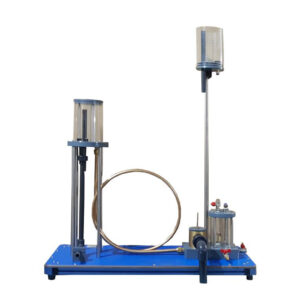A Stirling motor is a type of heat engine that generates mechanical work by the periodic compression and expansion of a working fluid, such as air or another gas, at varying temperatures. This process results in a net conversion of thermal energy into mechanical work. Similar to a steam engine, the motor is an external combustion unit because the heat source is external to the engine and all heat transmission occurs through the engine wall. However, in contrast to the steam engine, the Stirling motor uses a fixed amount of gas—either air or another kind—as its working fluid. Like previous heat engines, this one also uses compression to compress cool gas, heating it, expanding it, and then cooling it again before starting the cycle again. The Stirling Motor may be used with any kind of heat source, including renewable ones, and is renowned for its great efficiency and silent operation. An example of a thermodynamic machine in action for energy conversion is the Stirling Motor. It functions as a motor (heat engine) by converting thermal energy into mechanical energy. It can also run a load and an electrical generator. A perfect stirling cycle consists of four stages:
Phase 1: Heating the gas in the hot cylinder at a constant volume.
Phase 2: Isothermal expansion in the heated cylinder at a steady temperature
Phase 3: Continuous volume operation within the chilled cylinder
Phase 4: The gas in the cold cylinder is compressed isothermally.
Experiments
- Study of the conversion of thermal-mechanical- electrical energy.
- Study of the relation between the temperatures difference of the thermal machine and the speed
generated. - Calculation of the “threshold” temperatures difference which generates motion.
- Study of the mechanical power in relation to speed.
- Study of the electrical power in relation to speed.
- Mechanical efficiency calculation.
- Electrical efficiency calculation.
- Speed measurement (rpm).
- Torque measurement.
- Measurement of the generated electrical power.
- Temperature measurements.
- Pressure measurements.
Specifications
- Bench-top unit.
- Anodized aluminum structure and panels of painted steel.
- Diagram in the front panel with similar distribution to the elements in the real unit.
- Alfa type Stirling motor: hot and cold cylinders made of stainless steel and pistons made of bronze.
- Braking system.
- Temperature sensors connectors. Digital display for the temperature sensors. Selector for the temperature sensors. Voltage sensor connector.
- Digital display for the voltage sensor.
- Electronic console:
o Metallic box.
o Switches to open and close the flame device.
o Cables and Accessories, for normal operation - Device to control the flame of the heating element, to cover it and to release it.
- Alcohol lamp as heating element.
- Electrical generator with a pulley for converting the generated mechanical energy into electrical
energy. - Equipped with an electrical load and current and voltage measurement system.
- Current sensor connector. Digital display for the current sensor.
- Speed sensor connector. Digital display for the speed sensor.
- Manuals: This unit is supplied with the following manuals: Required Services, Assembly and Installation, Starting-up, Safety, Maintenance & Practices Manuals.




